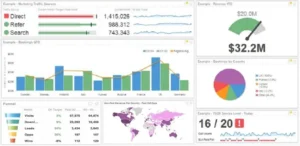Starting February 8th, Salesforce admins should notice a few changes to their instance as a part of the Spring ‘19 release. As is the case with most Salesforce releases, there’s a lot of new features and improvements, and navigating through all of them to determine what your instance can benefit from can be an overwhelming task. Fret no more, here are the highlights and how you should think about implementing them for your org.
Updates to the User Interface
This release has a handful of really helpful enhancements to the user interface that just make working from Salesforce a little bit easier. My favorite one is pinned list views. It used to be that when you access an object’s home page, it defaults to “Recently Viewed” records, which isn’t always relevant. Now, users can pin their most used list view so that whenever they go to that home page, that list view shows up instead of “Recently Viewed.”
Another cool add-on is the ability to close tasks with one click. From the task page itself, there’s a new button, similar to an Action, that automatically marks the Task as complete, as opposed to opening it in edit mode and having to click “Save.” And if a task is marked as completed by mistake, you can click that same button to open it back up again.
There are also lots of improvements to email. Not only is there now the ability to have hierarchy amongst email template folders, but email templates from Salesforce can also be accessed from within Gmail for users who have the Salesforce for Gmail integration. This feature will be helpful for users who prefer to live in their email inboxes, as opposed to Salesforce, because it allows them to still engage with SFDC and log activities even if their personal preference is to log in less.
Reporting and Dashboards
The most critical and, dare I say, overdue addition to reporting is the ability to adjust column widths. Another cool update comes in terms of report formats. First off, joined reports are now generally available for everyone and, second, matrix reports can be condensed to show a summaries table as well as a details table, to save on screen space.
There’s also an update to dashboards to make them more visually flexible. Rather than having to fit all different types of components into a 9-column framework, you can now toggle between 12 columns. Be aware, though, you can still only add a maximum of 20 components.
Flow Builder
After Spring ‘19, you won’t have to run flash in order to use the FlowBuilder. This was causing headaches for many users and is now no longer an issue. FlowBuilder now runs solely on Lightning resulting in faster loading and processing.
Also, the new FlowBuilder combines the old components “Fast Lookup” and “Record Lookup” into one component called “Get Records.” The differences between the two were subtle and confusing for users so they simplified the idea of pulling up records altogether. The new Flow Builder also allows for access to external objects within the flow framework.
Einstein Next Best Action
This release also has lots of improvements to Salesforce’s artificial intelligence (AI) engine, Einstein. What used to be only available on the home page, Einstein can be configured to look at various fields on all objects to recommend what the next best action should be, based on rules and suggestions that you setup. In terms of efficiency, this feature can significantly help users continue to move deals through the sales cycle by recommending things like helpful documentation or timely follow-ups.
These are only a few of the updates to the Salesforce platform that you can expect. For information on all things included in the Spring ’19 release, click here.







